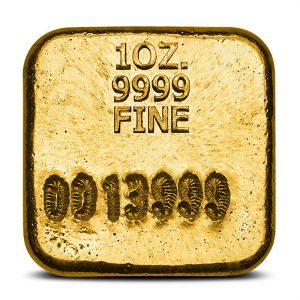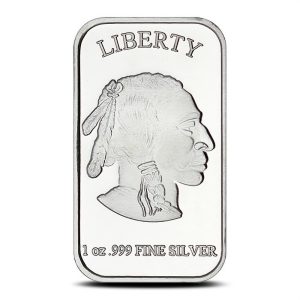Investing in precious metals is not simply a matter of buying or selling, an abstract concept like stocks or bonds. You are buying a tangible object, first and foremost, and tangible objects come with a set of concerns, unlike other financial instruments. Thus, with precious metals, you must understand how purity and weight work.
You may have heard many terms related to these topics before. However, the guide below is designed to synthesize all those different threads into a coherent picture. So, let’s talk about purity and weight for precious metals investing.
The Purity of Precious Metals
For the savvy investor, it is not a wise decision to own an amalgamated chunk of different rocks and minerals that have bits of gold, silver, or other precious metals within. The value of the chunk is directly related to the observable mass of these valuable metals.
What makes a precious metal “pure?”
The first part of understanding precious metal purity is realizing that precious metals are many things but are fundamental elements. What makes any element itself is the number of protons borne in the nucleus of its atom.
Thus, the notion of purity stems from the idea that there is an identifiable number of metal atoms present in each object. Purity, therefore, is the percentage of metal atoms within the complete mass of an object. So, an ingot of gold certified as 99% pure means that the ingot has 99 atoms of gold for every 1 atom of other elements.

What does the word “fine” mean?
Very few precious metal pieces, however, use the word “pure” to describe their composition. Instead, a coin, cast, or bar’s purity stamp usually uses the word “fine” after its percentage.
The fineness of a piece is technically the ratio of the precious metal’s mass against the entire object’s mass. However, the difference between ‘fine’ and ‘pure’ is mainly semantic when referring to purity.
One thing to bear in mind is that it is nearly impossible to find an entirely pure precious metal sample. Gold and, to a lesser extent, silver are extremely malleable in their pure forms and require a small dilution of other metals to hold their shape as coins or jewelry.
To allay any concerns, though, rest assured that the dilution is extremely small. The standard for pure commercial gold – 24 karats – is no less than 99.95% fine.
There are even some commonly traded pieces that are certified to be even more pure than that. Canada, for instance, mints its Gold and Silver Maple Leafs at 99.99% pure. Some limited editions of these coins are even finer still – as pure as 99.999%.
Karats, carats, and carrots
Homophones, or words that sound the same but mean different things and/or have different spellings, can confuse. Investing in precious metals brings you into contact with a set of homophones, so it’s important that you understand the differences, and what is what.
A karat is a unit of measure reserved almost exclusively for gold. It establishes the number 24 as the denominator for the ratio of the metal’s purity. Therefore, 24-karat gold is the purest commonly available item, as it is 24/24. Other levels of golden purity, such as 10-karat or 18-karat, can be considered as fractional purities of 24.
A “carat” is the luxury-related homophone to the karat and is likely the source of most confusion for precious metals investors because it is used adjacent to gold and silver. However, a carat is a unit of weight equivalent to 200 milligrams. The name derives from the seed of the carob plant, which is unusually uniform in its size and is almost always 200 milligrams.
Finally, a carrot is an orange vegetable. It has nothing to do with the other two and may only be used as the basis for terribly cheesy precious metals jokes.
Are karats only used for gold?
Mostly, yes. The karat is a bit of an old-school term but remains the standard measure for gold’s purity. However, other metals use the millesimal system, which establishes a precious metal’s purity in terms of parts per thousand.
In essence, the millesimal system trades the karat’s denominator of 24 for a denominator of 1,000. The larger number allows for more precise statements about exactly how much pure silver, platinum, palladium, or copper your piece contains.
We suppose that you could use the millesimal system for gold and karats for the other precious metals. However, in a business thousands of years old, it’s common to have ingrained traditions about how to do things.
Can I test my metals’ purity myself?
Yes, but it’s a task best left to the professionals, to be honest. There are both scientific tests and “life hacks” that are available to you for your gold and silver.
However, you likely have no way to know if your result is accurate with these tests because you probably aren’t an expert in metallurgy. The best way to test your pieces is to visit a local coin shop or jeweler that you trust – they can perform these tests with little problem.
The Weight of Precious Metals
The purity of your precious metals is an integral part of their value. However, on a more basic level, the weight of your metals is equally integral. So, you need to know how experts measure the weights of these items.

The troy ounce is not an ounce
Precious metals like gold and silver are often sold in ounces. However, this unit of measure is confusing to us in the US because we think that the ounces are the same. They’re not – precious metals investors and dealers use the troy ounce instead.
A troy ounce is equal to 1.097 “regular” ounces. So, every ounce of gold or metal you buy is roughly 11% heavier than the ounces in your kitchen or on your bathroom scale.
If you prefer to use the metric system, then a troy ounce is equivalent to roughly 31.1 grams. An ounce, by contrast, is about 28.5 grams.
Are precious metals measured in metric or customary units?
Both.
The US stands apart from much of the world in terms of its measurements. Our measures, based upon the English Imperial system, are now called customary units. The rest of the world, by and large, uses the metric system. To be fair, we use the metric system in some applications ourselves, so it’s not entirely one or the other here.
Fittingly, precious metals investors use both systems, though US stackers are more likely to stick with the customary units. However, it is not unusual to purchase gold, silver, or another precious metal in grams or kilos, which are distinct metric measures. Some bullion coins, notably Chinese Pandas, steadfastly use the metric system for their expressions.
So, you are quite likely to find both options with precious metals dealers. We are no exception – BGASC offers an assortment of sizes, particularly with its supply of bars of gold or silver. With the exception of coins, which are precisely struck with specific weights, you can usually find whatever amount of precious metal you’d like.




